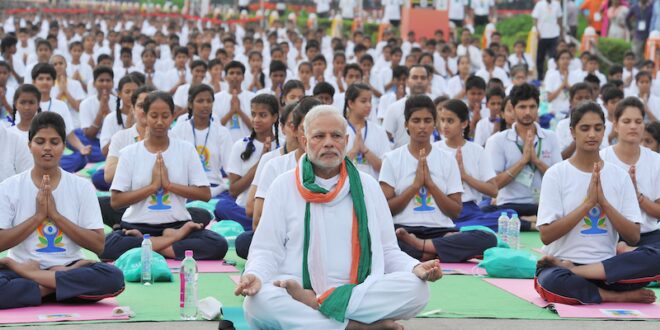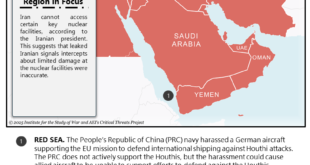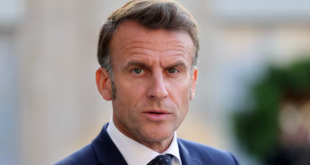The popular and picturesque term “soft power” has been increasingly used in recent years both in public discourse and in the academic community. The term was coined in 1990 by the American expert on politics and international relations, Joseph Nye.
In short, soft power means the ability of a state/nation to influence other states/nations through persuasion and attraction, and relies on three fundamental pillars: culture, political ideas and values, and foreign policy. It is diametrically opposed to the use of coercion or force (“hard power”) by economic or military means. Hard power is, for example, an attack by one state on another or the introduction of international sanctions (eg the Russian invasion of Ukraine and Western sanctions against Russia).
Nye, in his 1990 book, Bound to Lead: The Changing Nature of American Power, used the term to describe US power at the end of the Cold War when it became the world’s sole superpower. He then wrote: “when one country makes other countries want what it wants, it can be called cooperative or soft power as opposed to hard power or ordering others to do what it wants.” Nye explained in 2012 that soft power actually means “propaganda that is not propaganda” and that in the information age “credibility is the most valuable resource”. Although the term was first coined to describe America’s global influence in the world through politics, popular culture, art, technology, in fact every country (no matter how small) possesses soft power resources, the only question is how much they use.
Rarely has the term soft power been applied so successfully to a country as to India. India’s values are not necessarily related to the actions of its political leaders, but speak more about its thousands of years of civilization. India is one of the countries that abounds in soft power potentials, the most significant of which are: intercultural dialogue, yoga, Bollywood, democracy, the Indian diaspora, Buddhism, Indian cuisine and cricket. From 2014 onwards, Indian Prime Minister Narendra Modi consciously placed the idea of a civilizational state of India on the world stage and sought to increase India’s soft power within the framework of India’s foreign policy. And he succeeded. Modi declared: “India is not only a nation, but also an idea and a culture”.
Indian civilization – a civilization of dialogue
The roots of Indian civilization are very deep. Indian civilization is one of the oldest, largest and most successful civilizations, and it is unique in that, unlike others, it has maintained uninterrupted continuity with its glorious past. The civilization of India implies a unique and universalistic culture whose influence extends beyond India’s historical territory and Indian ethnolinguistic groups. From a civilization over 5,000 years old, various social, political and spiritual thoughts emerge that govern daily life in India and beyond. The mythological epics Ramayana and Mahabharata form an important part of the cultural heritage of India and the world, because they can be compared to the Iliad and the Odyssey, but they are many times longer than it.
India is a country with an extremely long tolerant interreligious culture, therefore many religions have found a safe haven from persecution on Indian territory. The outcome of such religious tolerance is modern India, which is home to practically all world religions. An interesting characteristic is that the number one religion for most Indians, Hinduism, has no central authority, no central church or foundation temple, hence Hinduism has developed into a vast number of sub-groups ranging from sects to family-level worshiping followings. individual gods. The main reason is that Hindus do not have one holy book and one center of religious power.
Unquestionable pluralism
It should be noted that from its beginnings, the idea of India is the idea of a unique space from the Himalayas to the Indian Ocean, which constitutes a unique cultural space where, since time immemorial, the search for the deeper truth, true meaning of life and spiritual values has taken place. These and such seekers of all possible religions and nationalities have been revered in India throughout its entire history.
Pluralism of all kinds and colors is the very essence of India and forms its integral, inseparable part. Ever since the young Hindu monk Swami Vivekananda performed and wowed at the World Congress of Religions in Chicago in 1893, this oriental spiritual view of the world and philosophy of life has been present in the West. Its influence is getting stronger because people today are turning more and more to the intangible values found in religions and alternative forms of life.
The pluralism and tolerance of India can certainly be seen in the diet of the population, which varies from vegetarians to Hindus and Muslims who have a special menu to classic omnivores. They all live with each other and accept these differences as something natural. Apart from Hinduism, Buddhism is also an original Indian religion because it originated in the Indian subcontinent and spread to China, Southeast Asia and beyond.
Democracy and tolerance
India is a stunning and magical country that the rest of the world admires because Indians manage to maintain a democratic order consisting of a wide range of castes, religions, nations, languages, classes, races, colors, customs, poverty and wealth. India projects its influence to the world through several very powerful messages and ideas.
The idea of nonviolence and peaceful resistance is directly related to India, especially with its founder Mahatma Gandhi, who is one of the planetary founders of the idea of peaceful resistance. The legendary fighter for the rights of American blacks, Martin Luther King, who was sometimes called the “black Gandhi”, visited India in 1959 and said: “I can go to other countries as a tourist. But I come to India as a pilgrim.” In the 21st century, India is the world’s largest functioning democracy with a free and independent media and judiciary, which has influenced its growing reputation in the international arena.
Indian healthy lifestyle
The idea of healthy eating and vegetarianism or Indian cuisine is directly related to the idea of the Indian nation. It is also supported by numerous Indian restaurants around the world opened by members of the Indian diaspora. Although at one time in the past Gandhi’s rituals and attitude towards food were considered strange and eccentric, today they are common and accepted by many in both the West and the East.
Today, one would easily find a large number of ardent supporters against smoking, which Gandhi considered worse and more harmful than drinking alcohol. He knew how to spend days without consuming salt or eating only raw food. Millions are doing the same today and looking for answers to many questions through a similar attitude towards nicotine consumption. Vegetarianism and veganism are increasingly popular and are directly related to the idea of India.
Yoga and Ayurveda
Today, it has become a reality that Indian fragrances and flavors enter the homes and lives of people in the farthest corners of the globe. Health and longevity is a topic that is written and talked about in detail in the developed and wealthy West. Yoga and Ayurveda (the oldest traditional medicine) are increasingly performing with their ancient knowledge and wisdom, and India along with them.
Ever since the time of the Beatles, meditation and inner peace have become practically everyday for a large number of people in the developed and stressful West. There, India has no competition and has become synonymous with meditation. Speaking at the 69th session of the United Nations General Assembly in September 2014, Prime Minister Modi officially launched the initiative to declare June 21 as International Yoga Day. The initiative was accepted by the UN General Assembly on December 11, 2014 with the support of 175 member states, which testifies to the universal appeal of yoga. That is why today all the embassies of India in the world organize events related to the promotion of yoga on that day and it has become a state policy.
Contemporary meditation gurus like Deepak Chopra or Maharishi Mahesh Yogi are known all over the planet. India has numerous fans all over the world and lovers of various forms of Indian culture, customs, religion, techniques and meditation methods, who self-initiatively and lovingly work to spread Indian soft power without pay from New Delhi and at no cost to Indian taxpayers. Numerous writers and artists from India live and work in the West, write in English and have gained global fame and influence (eg Salman Rushdie, Suzanna Arundhati Roy). The Hindu festival of Diwali (Festival of Lights) is becoming globally popular.
Bollywood
When the Golden Globe Award for “Best Original Song” was awarded on January 10, 2023, to the Indian film “RRR” and the song “Naatu Naatu”, it was news that reverberated around the world. It marked the celebration of India’s colorful cinematic tradition, the largest, most prolific and most diverse globally, but also the richness and virtuosity of Indian art and culture itself. The film was made by director S.S. Rajamouli, the author of three of the six most financially successful Indian films of all time. “RRR” was shot during the coronavirus pandemic and hit theaters in March 2022. It was shot for $72 million, making it the most expensive Indian film of all time. It earned as much as 160 million dollars in theaters around the world, the third highest amount in the history of Indian cinema. The film managed to make its way to cinemas in Europe and the USA, which is not easy for Indian films, even though the Indian film industry, Bollywood, is extremely successful.
Bollywood has an extremely strong influence on the entire Indian culture, and Indian films are popular throughout Asia and project a specific image of India. For example just before Prime Minister Modi’s visit to China in May 2015, the very popular Indian actor Aamir Khan was in China to promote a new hit movie. In total, Bollywood creates, in several languages, almost a thousand films a year, which is an extremely large number. The beautiful locations where the most successful films were shot are becoming tourist destinations for India’s rapidly growing tourist population. The fact that the largest number of stars in the Bollywood industry are of the Islamic faith is probably of particular value in the wider region where Indian films are popular. Equally, when they team up with external producers, they achieve success, such as the 2008 Oscar-winning film “Slumdog Millionaire”. Indian films are a significant cultural export and influence global customs and trends. Moreover, after the Kargil War in 1999, India and Pakistan jointly produced several films with the aim of restoring peace and harmony between the two countries. Indian TV series have also gained great popularity in many countries of the world.
Rich creative expression
India’s rich creative industries, including design, textile and fashion industries as well as painting, sculpture, architecture, languages and literature, are appreciated worldwide for their original and rich aesthetic and content quality.
Furthermore, Indian dance and music works were used by leading Western artists such as the Beatles, Michael Jackson, Madonna, Shakira, who incorporated them into their performances and songs. It is a modern fact that India has become a synonym for the IT sector due to the large number of Indian engineers who work worldwide in IT. Indians are using their intellectual capital and entrepreneurial vision to position the country at the forefront of the global IT industry. The Indian Institutes of Technology (IITs), which have a global reputation, are notable because the engineers educated there have excellent knowledge. Not surprisingly, many of the greatest computer programmers in the West are of Indian origin. India is the fastest growing entrepreneurial system in the world today.
India’s economy is developing largely due to the cultural and historical links between India with every corner of the world through trade, travel and tourism. The huge Indian diaspora of 32 million is extremely important there, and 2,5 million Indians migrate abroad every year – the highest in the world. However, this is not a disadvantage in India, as it is the most populous country in the world with 1,4 billion inhabitants.
Indian diplomacy
India has institutionally strengthened its approach to soft power. A Department of Public Diplomacy was established in the Ministry of External Affairs in 2006 and the Indian Council for Cultural Relations (ICCR) was expanded worldwide. The Ministry of Tourism has initiated the ‘Incredible India’ campaign and the Ministry of Overseas Indians has been tasked with highlighting the cultural, social and political values of India abroad. In November 2014, the Ministry of Ayush was established with official name: the Ministry of Ayurveda, Yoga and Naturopathy, Unani, Siddha, Sowa Rigpu and Homeopathy. Cricket has also proved to be a strong element in Indian diplomacy, especially with South Asian countries.
This year, India chairs the G20 group. The motto of the G20 summit in New Delhi this year in September is: “One country, one family, one future”, which shows India’s devotion to the fundamental principles of humanism. India has set six priorities for the G20 dialogue in 2023: 1) green development, financing climate change mitigation and the LiFE movement that promotes environmentally conscious practices and builds on India’s sustainable tradition, 2) accelerated, inclusive and resilient growth, 3) accelerating progress in achieving the goals of sustainable development, 4) technological transformation and digital public infrastructure, 5) multilateral institutions for the 21st century, 6) development led by women.
Narendra Modi – humanist leader of the world
Narendra Modi received the 2018 UN Champions of the Earth Award for Political Leadership. In the explanation of the award, it is written: “The UN Environment Program recognized the Indian Prime Minister for his courageous environmental leadership on the global stage. Under Modi’s leadership, India has pledged to eliminate all single-use plastics in the country by 2022.
Prime Minister Modi also supports and advocates for the International Solar Alliance, a global partnership to increase the use of solar energy.” Modi’s leadership on climate justice has been recognized in developed countries. as well as in developing countries. Similarly, India’s humanitarian initiative “Vaccine Maitri” aimed at distributing the coronavirus vaccine worldwide and other health initiatives have earned the respect of the international community.
The Modi-led government seeks to strengthen India’s soft power on the global stage by promoting positive humanist values acceptable to all at a time when the world is affected by the Ukraine war and dealing with the consequences of the Covid crisis. Thanks to the declaration that “this is not the time for war” and the propagation of the philosophy of “Vasudhaiva Kutumbakam” (Sanskrit phrase in Hindu texts: “The whole world is one family”), Modi has gained many fans around the planet. India’s soft power is very lively and present. India’s approach to soft power is perhaps best summed up by distinguished diplomat Pavan Varma: “We (Indians) are slowly emerging as important factors in the fields of politics, economy and military power. In the field of culture, namely, we have always been a superpower, due to our civilizational depth and antiquity.”
When all the characteristics of soft power are considered, the fact that it is home to the largest population of youth and women, with strong democratic institutions, a growing economy and a potent military, India is on the way to becoming a global superpower. At the same time, the greatest danger is posed by problems such as violence (especially against women), religious intolerance, as well as poverty, which is still widespread. Still, India’s potential is brilliant.
 Eurasia Press & News
Eurasia Press & News



